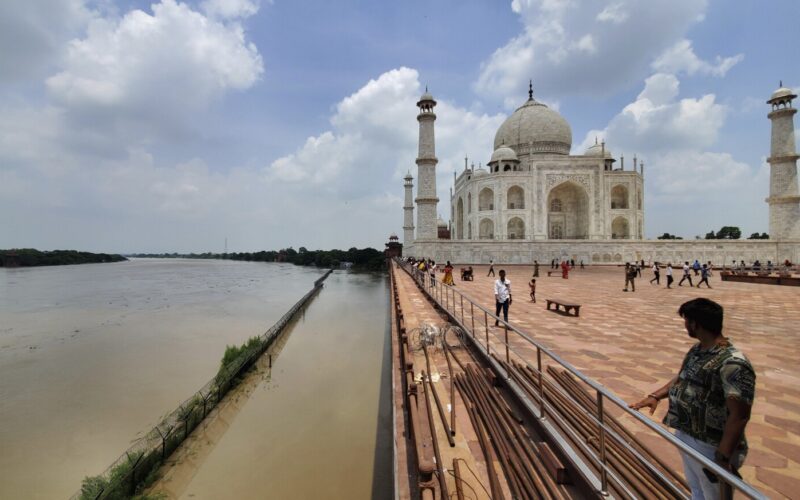The Taj Mahal, an iconic symbol of love and architectural marvel, stands proudly on the banks of the Yamuna River in Agra, India. While its stunning beauty and historical significance draw millions of visitors, there’s more to this UNESCO World Heritage Site than meets the eye. The brilliant design of the Taj Mahal not only captivates the heart but also incorporates ingenious engineering features that protect the main monument from potential flooding.
- Strategic Location: The architects of the Taj Mahal were mindful of the site’s proximity to the Yamuna River, which flows nearby. The monument was strategically situated on an elevated platform with a gentle slope away from the riverbank. This ingenious design ensures that any excess water from the river flows away from the main structure, reducing the risk of flooding.
- Deep Foundations: To further safeguard against flooding, the Taj Mahal’s foundations were built on deep concrete wells sunk into the ground. These wells, known as “Kasauti,” provide stability and elevate the monument above the flood level, ensuring that even during the monsoon season, the main structure remains safe from water damage.
- Drainage System: Intricate drainage channels, concealed within the marble flooring and carefully positioned around the Taj Mahal, allow rainwater to be efficiently channeled away from the monument. This intelligent drainage system prevents water accumulation, safeguarding the foundation and structural integrity of the Taj Mahal.
- Raised Platforms and Terrace Gardens: The complex features raised platforms and terrace gardens, which act as barriers during flooding. These elevated surfaces provide additional protection to the main structure by diverting water away from the lower levels. The terrace gardens, adorned with beautiful fountains, also contribute to the aesthetic appeal of the monument while serving a practical purpose.
- Use of Red Sandstone and White Marble: The Taj Mahal’s exterior is clad in red sandstone and adorned with intricate white marble inlays. Both materials are naturally porous, allowing water to seep through the surface during heavy rainfall. This characteristic prevents water from stagnating on the outer walls and protects the structure from water-related damages.
The Taj Mahal stands as a testament to the genius of its architects and engineers. Its timeless beauty is complemented by the thoughtful design that safeguards it from the unpredictable forces of nature, including flooding. The deep foundations, strategic location, drainage system, and use of porous materials all work in harmony to preserve this architectural gem for generations to come. The Taj Mahal is not only a symbol of love but also a symbol of human ingenuity and foresight in creating structures that harmonize with their environment. As we marvel at its grandeur, let us also appreciate the brilliance of its design, which has stood the test of time and protected this treasure from the challenges posed by the flowing river beside it.
